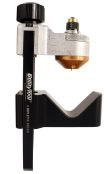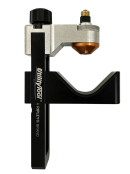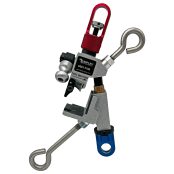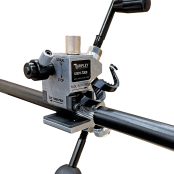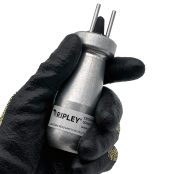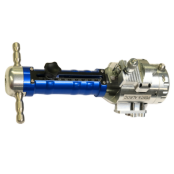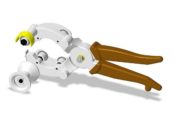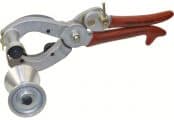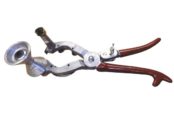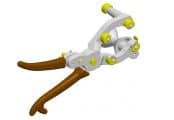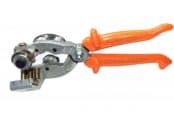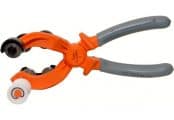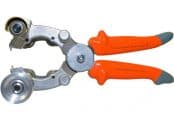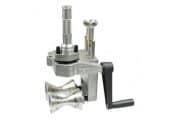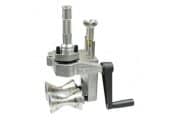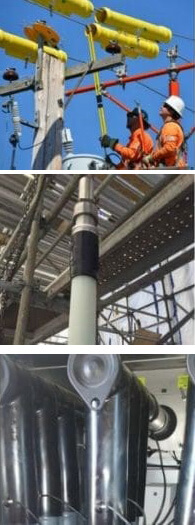Ripley US16 Max | Cable Sheath Jacket Stripping Tool LV HV

Ripley US16 MAX
DRILL OPERATED JACKET STRIPPING TOOL
Ripley US16-MAX | Large Size Cable Drill Operated Jacket Removal Tool
Professional, Safe & Consistent Stripping of Cable Sheath Jackets from LV MV HV Cables | No Open Blades
US16 Max Cable Sheath Jacket Stripping Tool manufactured by Ripley Tools is capable of performing slit, ring and spiral cuts on cable diameters of up to 38.1mm. The cable tool is equipped with a high grade steel blade, the versatile tool provides fast, safe and precisecable jacket removal from both hard and soft insulated cables without damaging underlying layers on LV MV HV (Low | Medium | High Voltage Cables).
The US16 Max has a easily adjustable blade to prevent underlying cable damage. Ring, spiral and longitudinal cuts can be accurately made by indexing the blade position. The cable sheath stripping tool is designed to assist in the removal of outer sheathing and primary insulation on low and medium voltage power cables.
US16 Tool design from Ripley provides a controlled depth, sheath stripping of cable up to 38.1mm with a single-bladed (Ring & Spiral Cut). The compact design is advantageous to the Jointer for working in compact switchgear compartments and confined space cable preparation applications. No pulling under force for stripping cable sheaths – the US16 Tool provides a more natural and free-flowing turn of cable preparation tool rather than forced exertion by the Jointer improving, safety, ergonomics and finish when preparing MV HV cables prior to Jointing & Termination.
The Ripley range of Cable Jointing Tools including the US15 PRO can improve cable safety and reduce cable damage.
rIPLEY us16 MAX Cable STRIPPING TOOL FEATURES
- Cable sheath/jacket is cleanly removed to expose cable shielding
- Micro indexing blade depth control to protect cable shielding
- Self-feeding design greatly reduces operator fatigue and strain
- Simple, safe blade depth adjustment
- Durable, reliable and built to last cable jointing tools
- Ergonomic design prioritizes user comfort and safety
- Suitable for cable diameters up to 2.625″ (66.675 mm)
| Part Reference | Item Description | Cable Diameter | Dimensions | Weight | Replacement Blade |
| US16-MAX | Drill operated jacket removal tool |
Up to 2.625 | 13″ x 11.5″ x 5″ (330 mm x 292.1 mm x 127 mm) | 8.5lb (3.9 kg) | US16-7510 |
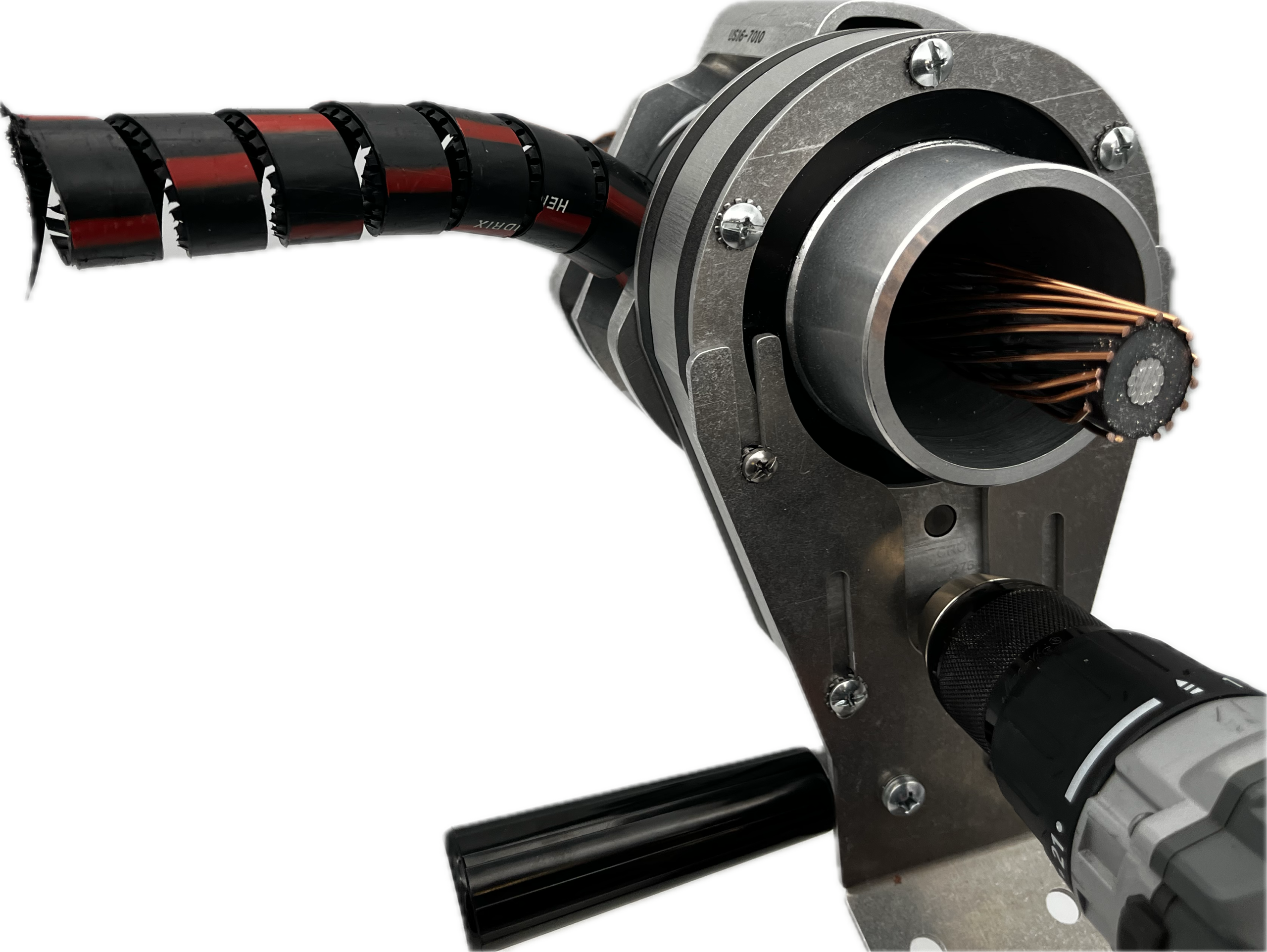

Operating Instructions – URD Jacket Removal
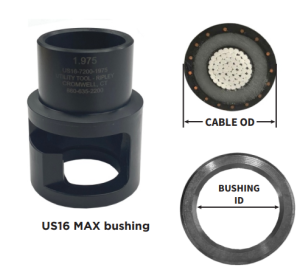
1. Bushing Sizing & Selection
The Ripley US16 tool relies on an appropriate bushing fit and clearance to a cable’s actual outer diameter. We recommend to submit a 3 to 4 foot sample of your cable to the Ripley Tools engineering department for review and sizing. Ripley will best-size a bushing diameter that will allow for typical over/under cable variation. Generally, the cable allowance will normally be about 1/32” – 1/16″. Each bushing will be identified by conductor size and cable type for convenience in the field. In addition the bushing part number will stamped on the bottom side for ease of re-ordering.
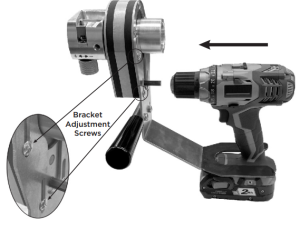
2. Attach The Drill
Only use a variable speed, non-impact style drill. Use a Flex 24V ½” Drill Driver, Milwaukee M18 ½” Drill Driver, or equivalent. Lock the drill chuck onto the 3/8” drive stud in the US16 MAX
tool. Note that the lower bracket has up and down adjustment to obtain a proper fit with the drill and also provide maximum hand space to operate the tool.
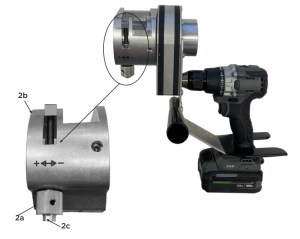
3. Bushing Attachment
To insert the bushing into the US16 MAX tool, the stripping blade must be fully retracted out of the front opening in the tool. The blade adjustment is the large knurled knob on the rotating head at the front of the tool(Fig 2a). A right hand rotation, toward the – mark, will raise the blade. Left hand rotation toward the + mark will drop the blade deeper.
Adjust the blade upward for clearance with the bushing. Raise the blade until its bottom edge is at or above the indicator mark (Fig 2b) on the rotating head. The blade adjustment screw has a fine thread. To move the blade up faster, the adjusting knob has an optional 7/16 speed nut (Fig 2c) to power the blade up. Retract the spring plunger (Fig 2d). Insert the bushing into the tool and secure it with the spring plunger.
4. Cable Preparation
The cable condition is important when stripping with the US16 tool. Train the cable as straight as possible and ensure the cable end is cut off clean and square with a band saw, hack saw, or good pair of cable cutters that keeps a round form on the cable.
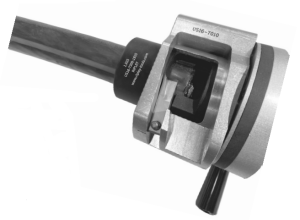
5. Setting The Blade Depth
If available, use a scrap piece of the cable to set the blade. A start depth can be established by following these steps.
A. The blade will be out of the working zone from step 3 above.
B. Insert the cable into the bushing and slide it underneath and past the blade.
C. Drop the blade until it touches the cable. Then index it 2 or 3 more depth clicks deeper so there is some pressure on the jacket.
D. Remove the cable. Drag should be felt from the blade.
The blade is typically set to around .020” above the cable shielding. This will allow the tool to make a clean strip of the jacket
and also protect the shielding from damage.
6.Operation
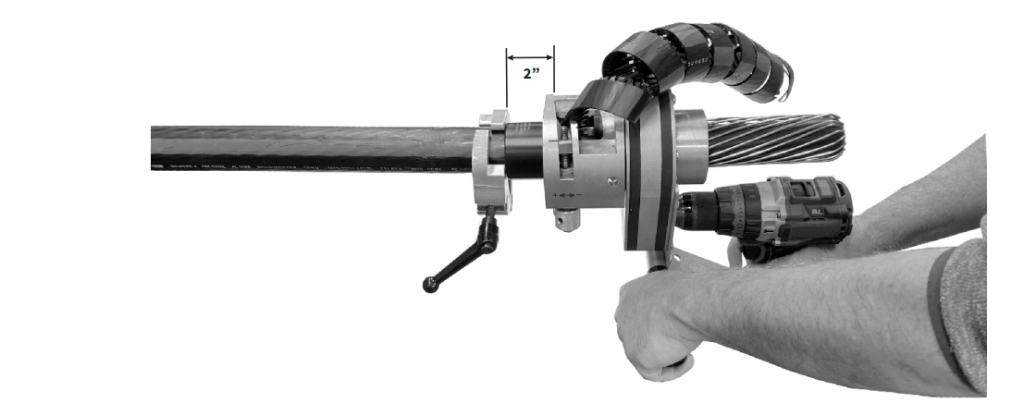
Re-insert the cable up to the blade. Run the tool slowly with light forward pressure to start the stripping operation. Carefully observe the strip performance. Re-set the blade to get the most reliable strip result. For long strips, stop the tool and trim the insulation chip.
The tool can be manually backed off or run up against a stop clamp to end the stripping operation. For an accurate strip length, note that the bushing extends exactly 2” past the blade cut. Add this 2” to the desired strip back length to locate the stop clamp on the cable.
Avoid freewheeling with the tool. When the insulation chip breaks off, immediately stop the
drill. Then extract the tool off the cable.
Operating Instructions – Overhead Insulation Removal
1. Bushing selection. The cable allowance will normally be about 1/32” clearance.
2. Attach the bushing to the tool and set the blade depth. Insert the cable up to the cutting blade. Adjust the cutting blade to 1/32 – 1/16” above the highest point of the conductor (Fig. 4A). On the initial blade setting, set the blade toward a conservative, shallow depth to avoid personal injury, tool damage and cable damage. Make a short strip. Then, re-adjust appropriately if needed. A stripped cable remnant can be inserted into the tool to serve as a gage to assist in setting the depth (Fig. 4B).
3. Operation. Run the tool at a slow speed (75-150 RPM). As the insulation chip becomes too long, stop the tool and trim the chip. To end the strip process, manually back off the tool or use a stop clamp as mentioned on page 3.
4. Stripping over head cable. On a few particular overhead conductors, the insulation chip may birdnest in the bushing window. If this becomes evident, grasp the end of the insulation chip with needle nose pliers and train it away from the bushing and blade. Stripping can then resume uninterrupted. (Fig. 4C)
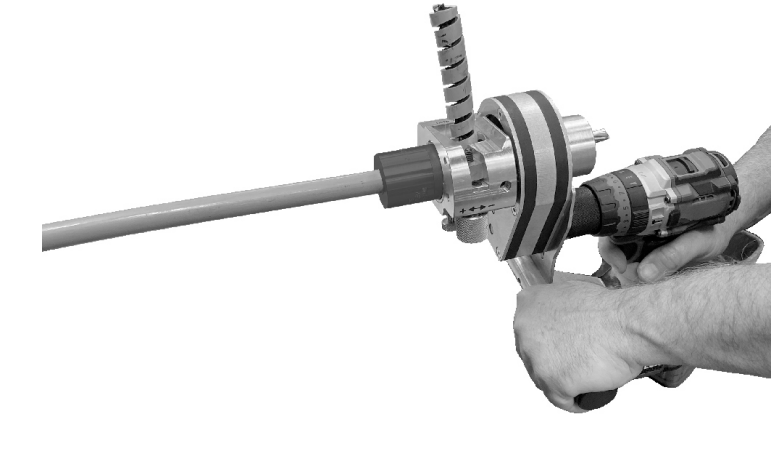
US16 MAX in Operation

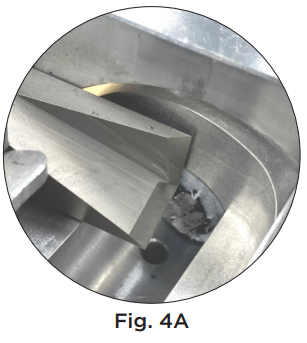 |
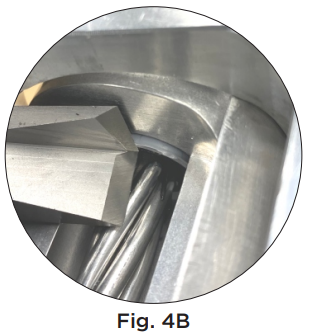 |
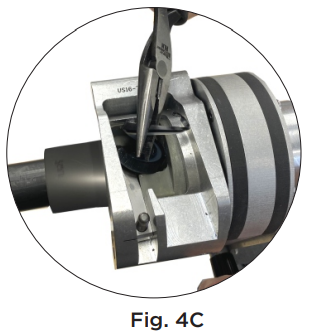 |
Cable Tool Blade Replacement
Rotate the blade adjustment knob in the “ – ” direction to continuously raise the blade until it unthreads off the adjustment screw. Carefully thread the new blade onto the screw.
| US16 MAX Tool | Ripley US16-7010 |
| US16 MAX Replacement Blade | Ripley US16-7510 |
| US16 MAX Bushing | Ripley US16-7200-XXXX |

Bonded Semicon US02-7000 | Sheath Jacket Removal US15 | Peelable Semicon SCS | Cable Stripper US01-7000 | Preparation & Jointing Tools for LV MV HV Power Cables & Fibre Optic









